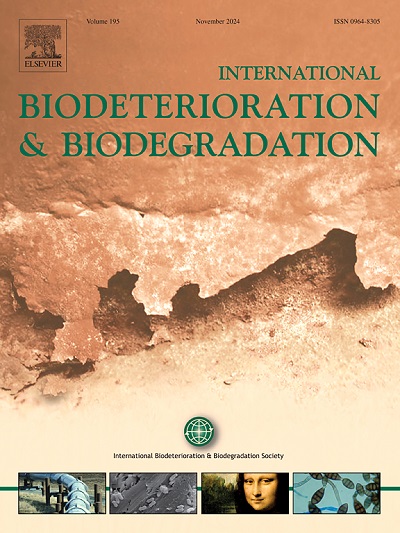Insights into mechanism of 1-hydroxy-2-naphthoic acid accumulation during phenanthrene degradation by Stutzerimonas frequens SL-6
IF 4.1
2区 环境科学与生态学
Q2 BIOTECHNOLOGY & APPLIED MICROBIOLOGY
International Biodeterioration & Biodegradation
Pub Date : 2025-02-01
DOI:10.1016/j.ibiod.2024.105975
引用次数: 0
Abstract
Oxygenated polycyclic aromatic hydrocarbons (oxy-PAHs) represent intermediate metabolites accumulating during the degradation of polycyclic aromatic hydrocarbons (PAHs), posing challenges to effective remediation of PAH contamination. Notably, 1-hydroxy-2-naphthoic acid (1H2N), distinguished by its heightened toxicity, emerges as a pivotal model compound for investigating oxy-PAHs. This research endeavors to unravel the mechanism behind the accumulation of 1H2N by Stutzerimonas frequens SL-6, an efficient phenanthrene-degrading bacterium. Genomic analysis of S. frequens SL-6 implicated nahA, salA, and nahR in the accumulation process of 1H2N. This hypothesis was validated through in vitro assessments of enzyme catalytic activity, reinforced by in vivo gene knockout and complementation studies. Our findings pinpoint SalA as a critical factor in the accumulation of 1H2N. Subsequently, the overexpression of SalA in S. frequens SL-6 led to a 70% reduction in the accumulation of 1H2N. These insights deepen the global understanding of microbial PAHs degradation processes and provide a theoretical foundation for the development of microbial strains capable of efficiently and thoroughly degrading PAHs.
求助全文
约1分钟内获得全文
求助全文
来源期刊
CiteScore
9.60
自引率
10.40%
发文量
107
审稿时长
21 days
期刊介绍:
International Biodeterioration and Biodegradation publishes original research papers and reviews on the biological causes of deterioration or degradation.

 求助内容:
求助内容: 应助结果提醒方式:
应助结果提醒方式:


